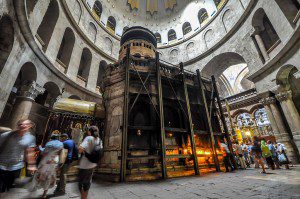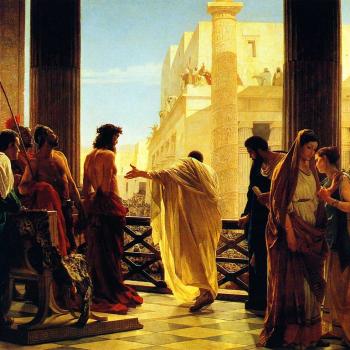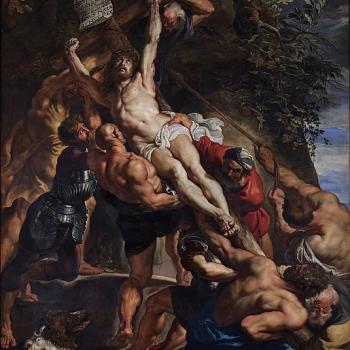 We blogged about the excavation and renovation of Jesus’ tomb at our post “See the Place Where They Laid Him.” Now, just in time for Easter, the renovation work and the preservation of the site at the Church of the Holy Sepulcher in Jerusalem have been completed.
We blogged about the excavation and renovation of Jesus’ tomb at our post “See the Place Where They Laid Him.” Now, just in time for Easter, the renovation work and the preservation of the site at the Church of the Holy Sepulcher in Jerusalem have been completed.
The shrine had been in danger of collapse, but it has now been reinforced and protected.
Experts who put the site back together cut a window into the marble slabs so that the bare rock where Jesus’ body lay before His resurrection can be seen.
Photos of the restoration work are copyrighted, so go here for a bird’s eye view of where our Lord’s body was laid.
Photo of Aedicule, which encloses what is thought to be Christ’s tomb by Jlascar (https://www.flickr.com/photos/jlascar/10350934835/) [CC BY 2.0 (http://creativecommons.org/licenses/by/2.0)], via Wikimedia Commons
From Daniel Estrin, from Historic Restoration of Jesus’ Burial Site Completed, News from The Associated Press:
A restoration team from the National Technical University of Athens stripped the stone slabs from the shrine’s façade and patched up the internal masonry of the shrine, injecting it with tubes of grout for reinforcement. Each stone slab was cleaned of candle soot and pigeon droppings, then put back in place. Titanium bolts were inserted into the structure for reinforcement, and frescos and the shrine’s painted dome were given a face-lift.
The restorers also made some discoveries.
On Oct. 26, the team entered the inner sanctum of the shrine, the burial chamber of Jesus, and temporarily slid open an old marble layer covering the bedrock where Jesus’ body is said to have been placed.
Below the outer marble layer was a white rose marble slab engraved with a cross, which the team dated to the late Crusader period of the 14th century. Beneath that marble slab was an even older, grey marble slab protecting the bedrock, and mortar on the slab dates to the 4th century, when Roman Emperor Constantine ordered the Church of the Holy Sepulcher built.
The restorers have cut a small window from the shrine’s marble walls for pilgrims to see – for the first time – the bare stone of the ancient burial cave.
“It seems we are in front of levels of history that are validated,” said Antonia Moropoulou, who supervised the renovation.















